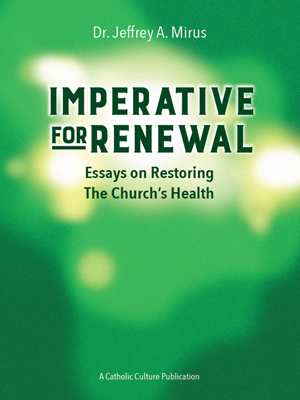dinner with the dead
By Diogenes ( articles ) | Jun 26, 2006
A restaurant review with a difference. Matthew at the Whapping blog has a lengthy meditative post on a visit to the Culinary Institute of America, whose buildings were built to house the Jesuit Novitiate of Saint Andrews-on-Hudson. The SJs left the property in the 1960s to take up new quarters in New York City, but traces of the original purpose linger.
The high altar is missing, and a banquet table stands now in the empty apse, still gorgeously gilded. Side chapels are now little empty niches filled with spare tables. It is all too clean, too neat and tidy, too well-restored to be melancholy like a ruin. The contrast feels at gut level more baffling than blasphemous. Culinary iconography -- a gilded panoply of forks and knives en saltire and busts of patrons and famous chefs -- fills in the gaps behind where the altar might have stood. It might have seemed witty anywhere else. But here, in contrast with stained-glass angels and gilded saints, the contrast is strange -- and almost unsettling as your eye moves up the pillars, to see gilded mosaics of very different knives and forks, the spears and pincers of the Passion roosting in the vaults above.
Melchisedek is there, like I said, and Ignatius, in black stained glass robes, kneels before a pontiff in a gorgeous Renaissance chamber, as if the hundred rooms of the college were still filled with future SJs. Nobody knew enough Latin to scrape down the slogans of Cibus viatorum and Panis angelicus that stand, with a certain unsettling irony, in the apse. But the apse is empty. You can't undo what happened in the sixties here. To demand its return after a fair-and-square deal would be futile, and somehow it seems impossible to blame the chefs for this oversight, when there were theologians who knew better to give them this place, once upon a time. It's an auditorium that looks like a church -- while had the Jesuits remained, it might have become a church that looked like an auditorium. But we will never know -- and Providence has, for whatever reason, chosen another future for the place.
The essay is more concerned to describe than to moralize, yet it touches on a striking point: in walking around the old novitiate we don't see bare ruined choirs. The sense of sadness, perceptible only to someone sympathetic to the Jesuits' history, is produced not by broken arches or weeds growing in derelict courtyards but by the bustle of a well-equipped facility with purposive folks going about their business, not hostile, but indifferent to the religious past that surrounds them. "There's a certain melancholia here," writes Matthew, "like the monks interrupted at their prayer by Thomas Cromwell's men, until you realized there was no forced dissolution here."
* * *
As a coda to Matthew's reflections, one might ponder this posting on Gerald Augustinus's blog.
All comments are moderated. To lighten our editing burden, only current donors are allowed to Sound Off. If you are a current donor, log in to see the comment form; otherwise please support our work, and Sound Off!








